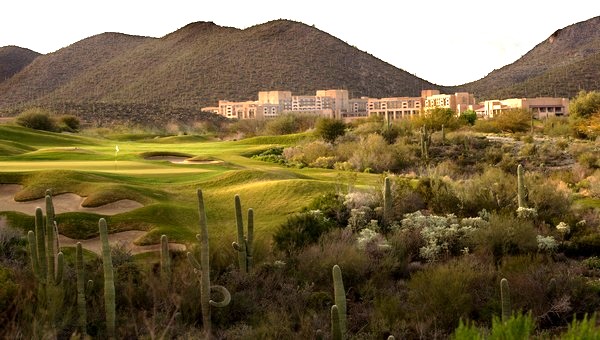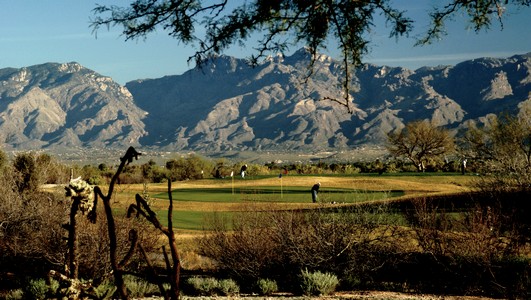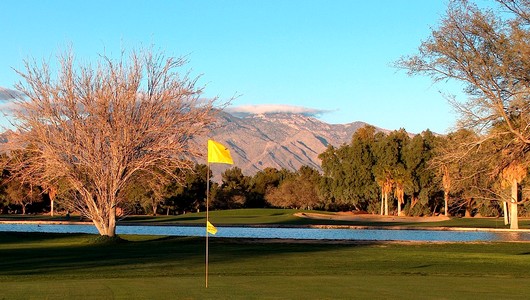La Paloma Country Club – Canyon / Hill / Ridge Courses
Ask local golfers to choose the best country club in the Tucson area, and this place is going to get plenty of votes. La Paloma, situated in the foothills of the Santa Catalina mountains, is part of an 800-acre development that combines stunning mountain and city views with superb amenities and service.
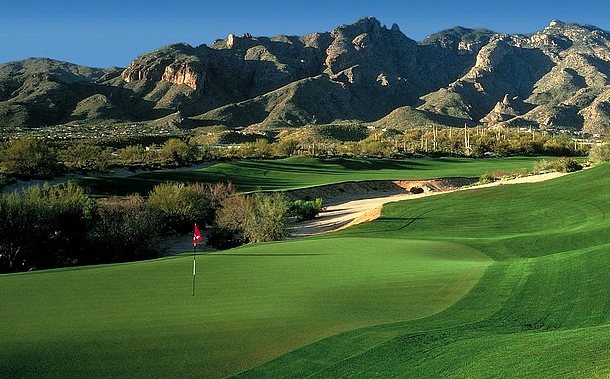
La Paloma is the first project Jack Nicklaus tackled in Tucson and one of his first as a course designer after working under several architects, including Pete Dye in the 1960s and ‘70s. La Paloma, built in 1984, has three nine-hole courses called Ridge, Canyon and Hill, which are played in combinations.
Nicklaus insists that his early designs were mellow, but some golfers have left this course muttering about “Jack the Ripper.” Each of the course combinations have six sets of tees and play at about 7,000 yards from the tips.
The Ridge/Canyon combo is the toughest with a rating of 72.9 and a slope of 151. Tee times are reserved for club members and guests of the Westin La Paloma Golf Resort & Spa, a world-class facility that has earned numerous accolades from Golf Digest and Conde Nast Traveler.
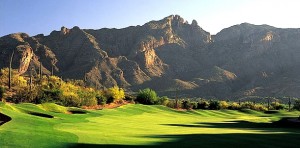 Fairways are tight in spots, but are bowl-shaped on the outer edges, helping funnel tee shots back to the short grass. If you’re playing it for the first time, consider leaving your driver in the bag because it’s not wise to try to overpower this layout – attack where appropriate during your second loop if you dare.
Fairways are tight in spots, but are bowl-shaped on the outer edges, helping funnel tee shots back to the short grass. If you’re playing it for the first time, consider leaving your driver in the bag because it’s not wise to try to overpower this layout – attack where appropriate during your second loop if you dare.
As for memorable holes, Ridge has a pair of excellent par 3s. The fourth, at 199 yards, is a picturesque hole that plays across the edge of a canyon floor 30-40 feet below the green and has rolls and depressions that divide the green into three distinct pin placement areas. No. 7 is shorter at 171 yards across a valley and sand trap to a small, hillside green.
Canyon features an extremely difficult four-hole stretch starting at No. 5, a 542-yard par 5 that is the No. 2 handicap hole and requires an approach shot over a deep canyon. Next up are par 4s at 355 and 445 yards with terraced greens cut into natural hillsides and a 211-yard par 3 that requires a tee shot over natural desert to a well-bunkered green.
The Hill, however, is the most famous nine because it was the setting for part of the film Tin Cup, starring Kevin Costner and Renee Russo. It also has a great finishing stretch, highlighted by the fifth hole, a sweeping dogleg par 4 at 467 yards, and the seventh, a 538-yard par 5 dogleg right with an approach shot over a wash to a small, pristine green.
Along with the skyline, La Paloma also offers views of Kitt Peak, the fifth-largest observatory in the country, and a landmark known as Finger Rock, which juts up from the Santa Catalinas. La Paloma Resort amenities are all top shelf and deserve a visit – though, perhaps just a look at the 177-foot waterslide will suffice; your choice.
